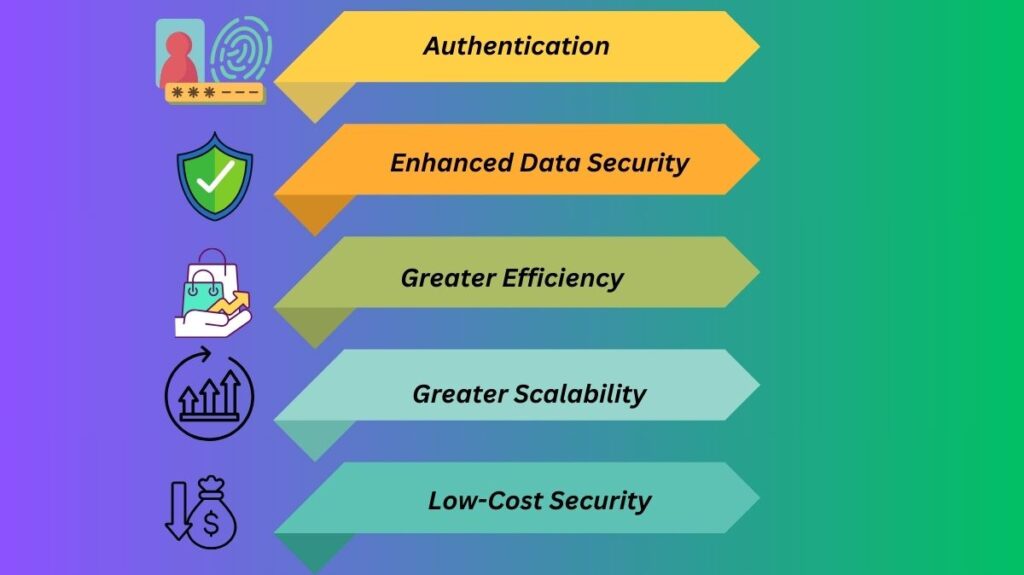Public Key Infrastructure advantages

Public Key Infrastructure (PKI) has many benefits:
PKI allows parties to securely transfer data using public and private keys. The recipient’s public key encrypts the message, which only the matching private key can decrypt.
User authentication: PKI helps stop data breaches and cyberattacks by making sure that only authorised individuals may access systems and data.
Data integrity: PKI shields information from unwanted modifications while it’s being sent.
Convenience: By removing the need for manual password and encryption key exchange, PKI enables users to securely connect and share data more easily.
Management of the certificate lifecycle: PKI offers resources for issuing, rescinding, and renewing digital certificates, assisting in making sure that only legitimate certificates are utilised. By doing this, security is improved and unwanted access is decreased.
Big networks are supported: Because each user keeps their own certificate, PKI is compatible with big networks with numerous users.
Safeguards client data privacy: PKI is capable of safeguarding client data privacy.
Protects intellectual property: PKI may protect the intellectual property of a business.
Enhances technology compliance: PKI has the ability to enhance technology compliance.
Workloads that are dispersed and remote can be secured with PKI.
Protects IoT devices: A lot of IoT devices can be protected by PKI.
Public Key Infrastructure (PKI) disadvantages:
Cost: The implementation of PKI can be costly, and continuing expenses include assigning administrative users, creating policies, and providing training.
Certificate issues: When implementing PKI for the first time, weak keys might be a common concern.
Problems with certificate revocation: Unauthorized access may arise if expired certificates are not promptly revoked.
Insufficient key and certificate protection: Private keys must be kept secret since they serve as a doorway to important data.
Illusion of security: Public key cryptography only safeguards the things it is intended to safeguard.
Limitations on security: Any person or computer can have a certificate signed by any certificate authority.
How does Public Key Infrastructure work?
To guarantee the confidentiality of messages and to verify the identity of the device or person transmitting them, public key infrastructure employs asymmetric encryption techniques.
Using a public and private key is a component of asymmetric encryption. To encrypt data, a cryptographic key is a lengthy string of bits.
Anyone who asks it can obtain the public key, which is provided by a reliable certificate authority. This public key authenticates and confirms who sent the encrypted message.
In public key infrastructure, the private, or secret, key is the second part of a cryptographic key pair. The recipient of the encrypted message uses this key to decrypt the transmission, but they keep it confidential.
To encrypt and decrypt public/private key pairs, sophisticated algorithms are employed. The private key ensures only the receiver may see the digital communication, while the public key verifies the sender.
Public key infrastructures for security
Which security controls are used in Public Key Infrastructure
By using their own public and private keys and issuing self-signed certificates to themselves and one another, CAs further build confidence. For this technique to work, a CA hierarchy is needed, where a very reliable CA serves as a root certificate authority and is trusted to self-sign both their own and other CAs’ certificates.
If the keys belonging to a CA are hacked, a hacker could produce phoney certificates and cause a significant security breach. As a result, root certificate authority mostly function offline and adhere to the highest security standards. If a subordinate CA or a root CA is compromised, they have an obligation to notify the public of the breach and provide certificate revocation lists for any prospective recipients or holders of certificates.
This makes private key security even more crucial for CAs. It’s bad enough when a private key ends up in the wrong hands, but for certified public accountants, it can be disastrous because it allows someone to issue certificates fraudulently.
Keeping root certificates secure
As you go up the chain in a CA hierarchy, security measures and the impact of loss worsen because a root certificate cannot be revoked. The company must disclose the security breach to the public if a root CA is compromised. The strictest security precautions are therefore found in root CAs.
In order to adhere to the strictest security guidelines, root CAs should hardly ever be online. The best course of action for root CAs is to keep their private keys in NSA-grade safes in modern data centers that are constantly monitored by security cameras and physical guards. Though they may all sound drastic, these steps are required to safeguard a root certificate’s legitimacy.
In certain situations, a root CA must come online, even though it should be offline 99.9% of the time. The creation of public keys, private keys, and new certificates, as well as the verification that its own key material is still authentic and hasn’t been tampered with or hacked in any manner, require root CAs to go online. Root CAs should ideally perform these checks two to four times annually.
It’s crucial to remember that root certificates do have an expiration date. Generally speaking, root certificates last 15–20 years, while certificates from subordinate CAs last about 7 years. It’s difficult to introduce and establish trust in a new root, but it’s crucial that these certificates expire since the longer they remain in use, the more susceptible they are to security threats.
